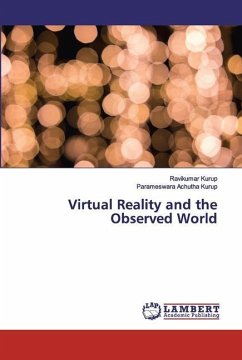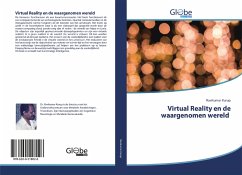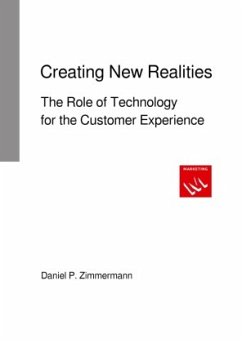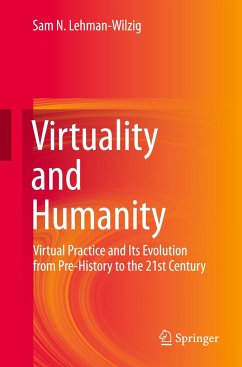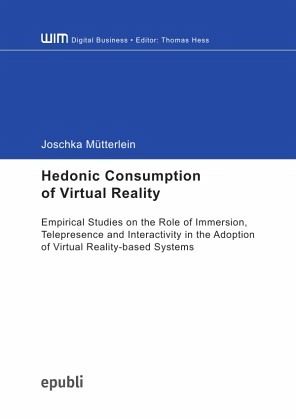
Hedonic Consumption of Virtual Reality
Empirical Studies on the Role of Immersion, Telepresence and Interactivity in the Adoption of Virtual Reality-based Systems
Versandkostenfrei!
Versandfertig in 6-10 Tagen
29,99 €
inkl. MwSt.

PAYBACK Punkte
0 °P sammeln!
With the release of the Oculus Rift as a virtual reality (VR) device geared towards consumer use and the subsequent acquisition of the developing company by Facebook for two billion dollars, interest in VR technologies has increased tremendously. The consumer market potential of VR has been said to be high, but actual market diffusion is astonishingly slow.The assumed potential of VR is due to its unique characteristics that distinguish VR consumption experiences from experiences employing other media technologies. These characteristics are mainly immersion, telepresence, and interactivity. Al...
With the release of the Oculus Rift as a virtual reality (VR) device geared towards consumer use and the subsequent acquisition of the developing company by Facebook for two billion dollars, interest in VR technologies has increased tremendously. The consumer market potential of VR has been said to be high, but actual market diffusion is astonishingly slow.
The assumed potential of VR is due to its unique characteristics that distinguish VR consumption experiences from experiences employing other media technologies. These characteristics are mainly immersion, telepresence, and interactivity. All three terms describe psychological phenomena that users experience during VR consumption. Whether and how these characteristics make VR really special are questions that this book addresses.
It consists of four subsequent empirical studies that clarify which factors are fundamental for hedonic VR consumption; investigate the interplay and effect of immersion, telepresence, and interactivity in the VR consumption of individuals as well as in collaborative contexts; and compare a hedonic VR consumption experience to a similar experience without VR. The findings highlight that consumers perceive various characteristics stronger in VR than in other media technologies, but not necessarily to an extent that allows VR to provide enough hedonic value for broad adoption on the consumer market.
The assumed potential of VR is due to its unique characteristics that distinguish VR consumption experiences from experiences employing other media technologies. These characteristics are mainly immersion, telepresence, and interactivity. All three terms describe psychological phenomena that users experience during VR consumption. Whether and how these characteristics make VR really special are questions that this book addresses.
It consists of four subsequent empirical studies that clarify which factors are fundamental for hedonic VR consumption; investigate the interplay and effect of immersion, telepresence, and interactivity in the VR consumption of individuals as well as in collaborative contexts; and compare a hedonic VR consumption experience to a similar experience without VR. The findings highlight that consumers perceive various characteristics stronger in VR than in other media technologies, but not necessarily to an extent that allows VR to provide enough hedonic value for broad adoption on the consumer market.



